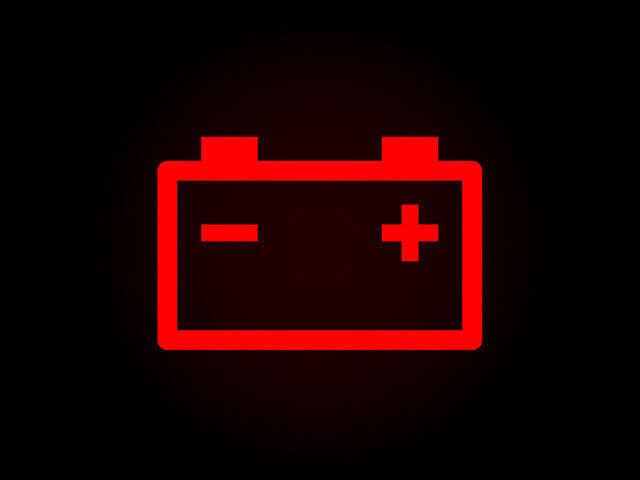Without a functioning alternator, you will likely notice that your car's headlights, radio, and other electronic components struggle to work.
Page Contents
Summary
A car alternator is a component that delivers electricity to the electrical components of your vehicle.
It generates electricity using mechanical energy whilst driving.
As it is a key part of your vehicle, it is important to know when it may need replacing, and how to go about testing and changing your alternator if needed.
Glossary
Combustion Vehicle – A vehicle that uses the combustion of a carbon-based fuel to provide power. An all-electric vehicle is not a combustion vehicle.
Crankshaft – A steel rod that converts the movements of pistons into the rotation to provide power.
Power Surge – A fast yet short spell of electricity that is higher than usual in an electrical circuit, usually resulting in a power cut.
Voltmeter – A device used to measure the voltage output of your alternator.
What Is an Alternator?
An alternator is a generator that supplies electricity to the car and recharges the battery.
All combustion vehicles have alternators. In fact, it is a vital part of your engine, and your car wouldn’t be able to run without it.
The alternator can usually be found mounted to the front of the car’s engine and has a belt running all the way around it.
Components of an Alternator
The components of your car’s alternator are different from model to model and are designed to be able to provide the correct amount of power your vehicle needs to run smoothly.
Here are four of the main components of a car alternator:
Rotor and Stator
The rotor and stator produce electricity.
The rotor is cylindrical and is surrounded by magnets.
It spins inside of the stator, alongside a set of conductive copper wiring.
As the magnets move around the rotor and over the copper wiring, electricity is generated.
Voltage Regulator
This does exactly as you might expect – regulates the voltage.
It controls the flow of electricity to the battery and delivers power to your car's electrics.
Diode Rectifier
This is the part which transforms the voltage into electricity that can be used by the battery to recharge itself.
Cooling Fan
The alternator can get hot whilst working, so needs a way to cool off.
They are fitted with vents and usually are coated in aluminium, but also include a fan which blows cool air to keep the alternator at an ideal temperature.
What Does an Alternator Do?
We mentioned that the alternator is important – but what does it do?
The alternator is responsible for running the radio, the heater, the air conditioning, and the headlights.
The alternator’s purpose is to convert mechanical energy into electricity.
As many parts of your car are powered by electricity, this needs to be generated from inside the car to work.
More importantly, the alternator also charges the car battery – it does this every time you drive.
How Does an Alternator Work?
The alternator works by the serpentine belt, also known as the drive belt, and the crankshaft working together.
The mechanical energy of the moving drive belt spins the alternator’s rotor at a high speed. As the rotor spins, electricity is made.
The magnets and the copper wiring in the alternator then create a magnetic field, producing a voltage that is captured by the stator.
It is then the voltage regulator’s job to deliver the electricity in the correct amounts to the battery and to the other electrical components of the car.
Do I Have an Issue With My Alternator?
Unfortunately, you may end up with a broken alternator which needs replacing in your car’s lifetime.
But how might you notice that there’s an issue with the alternator?
Car Will Not Start
If the alternator stops working, the other electrical components we talked about earlier will draw the electricity from your car battery.
This will run the battery flat, and you won’t be able to start the car – a key giveaway that you have an issue with your alternator.
Warning Light Comes On
If you have an issue with the alternator, the battery warning light will become illuminated on your dashboard. If you are unfamiliar, it looks like this:

Some cars will light up with the letters ‘ALT’ or ‘GEN’ to indicate that the alternator is the reason that your battery warning light has lit up.
Headlights Are Dimmer Than Usual
If you notice that your headlights are dimmer than usual, you could have an issue with the alternator.
Since the alternator is what powers your headlights, as soon as they begin to dim you will know you have the first warning sign of an alternator needing replacing.
Unusual Noises
If something becomes loose inside the alternator, such as the belt or a magnet, you may hear some unpleasant grinding or whining noises coming from inside your car.
This could indicate an issue that needs to be fixed sooner rather than later.
Electrical Components Stop Working
If your radio fails to turn on, or your air conditioning or heater is refusing to work, you may need to get the alternator replaced, as it is no longer delivering the much-needed electricity to power your car’s electrical components.
What Causes Issues With My Alternator?
There are several causes of an alternator failure:
Dead Alternator
Even the highest quality auto parts can’t last forever.
The average lifespan of a new alternator is between 5 and 8 years, so it could be purely that it has run its course and needs replacing.
Computer Issues
In some newer cars, an ECU (electrical control unit) is installed to virtually manage the different components of the vehicle.
If the system glitches – which all computers may do – it could prevent the alternator from working the way it should be.
Wiring Issues
There are lots of wires in your alternator, as this is the way in which the power generated is delivered.
If one of these wires is loose or worn out, it could cause the alternator to fail.
Broken Belt
The belt on your alternator is often made from rubber, meaning it may be worn out over time due to prolonged use or hot temperatures.
You may need to replace the belt before replacing the entire alternator.
Blown fuse
If your car experiences a power surge, it may be that you blow a fuse.
Your alternator won’t run with a blown fuse, so check all the fuses with any issue with your alternator.
You can book an alternator repair if it is experiencing problems.
How is an Alternator Tested?
The condition of your alternator is tested using a tool called a ‘voltmeter’.
This device reads the voltage of your battery and will be able to indicate if your alternator is working as it should.
It can take different readings based on the voltage coming from the engine, and depending on the figures, you will know if you have to replace your alternator, or simply charge the battery.
You can buy a voltmeter cheap from Amazon or any good automotive shop.
Testing your alternator yourself is fairly straightforward – ChrisFix has a fantastic tutorial you can watch here:
FAQs
.jpg&w=3840&q=75)







No comments yet
Leave a comment